Common names for plants are easy to remember, not standardized, and vary by region. These names are often descriptive of the plant's characteristics. A common name for a plant with a look-alike or other similarity may be named "false" or "fools."
If you aren't paying attention, you may be fooled.
Fools Sang
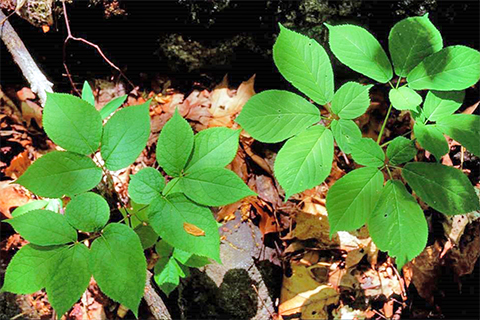
Left: Fool's sang, Right: American ginseng. Photo: Eric Burkhart
One of the look-alikes found in Penn's Woods are American ginseng (Panax quinquefolius) and fool's sang or wild sarsaparilla (Aralia nudicaulis). There are several differences but the most obvious is the arrangement of the leaves.
American ginseng has leaflets radiating from a single point, with five leaflets and fool's sang has leaflets arranged on each side of the leaf's central stalk with up to five leaflets. Both have medicinal properties, but due to American ginseng's popularity around the world, it is harvested and planted for sale.
Solomon's Seal and False Solomon's Seal
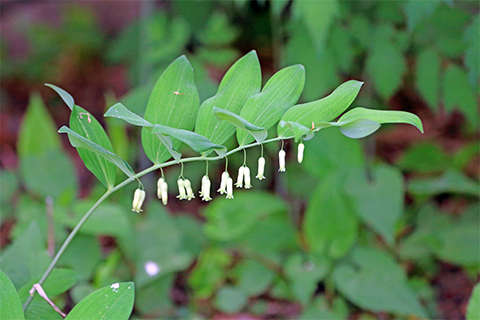
Solomon's seal
Two common look-alike species that can be found in the woods are false solomon's seal (Maianthemum racemosum) and solomon's seal (Polygonatum pubescen), both are native to Pennsylvania and are in the Ruscaceae, or butcher broom family.
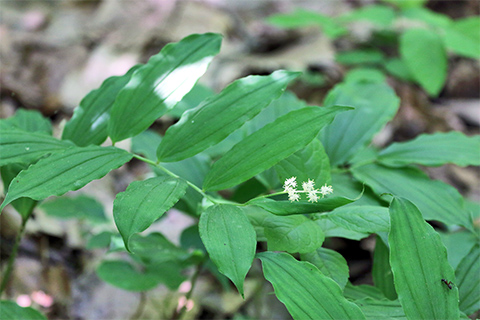
False soloman's seal
False solomon's seal has flowers at the very end of an arched, leafy stem while solomon's seal flowers dangle under the stem.
Canada Mayflower
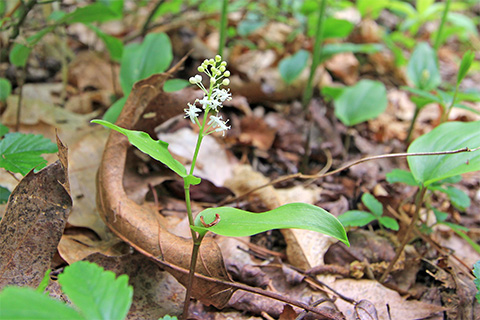
Canada Mayflower
There are three additional species of Maianthemum found in Pennsylvania. One of which, Canada mayflower (Maianthemum canadense), carries false lily-of-the-valley as an additional common name. The European lily-of-the valley is closely related and is also in this same family.
False Hellebore
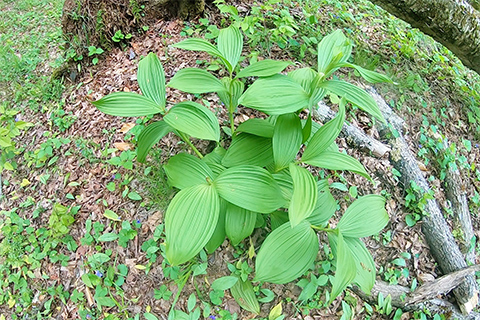
False hellebore
Although they look nothing alike and are native on different continents, false hellebore (Veratrum viride) and hellebore (Helleborus ssp) both share the common name "hellebore."
What they do have in common is that they are both toxic and steeped in folklore about their malicious uses. False hellebore, in the bunchflower family, is common in Pennsylvania wetlands and blooms in the summer.
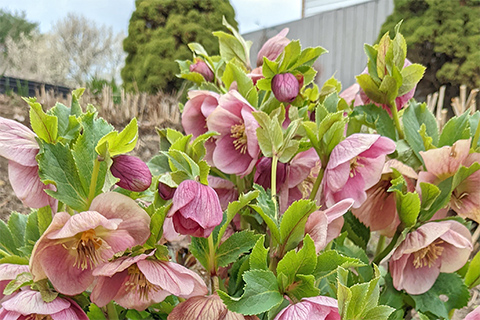
Hellebore
Hellebore or Christmas rose, is in the buttercup family and originated in Europe -- but has a wide distribution due to cultivation and blooms as early as late winter.
Blue False Indigo
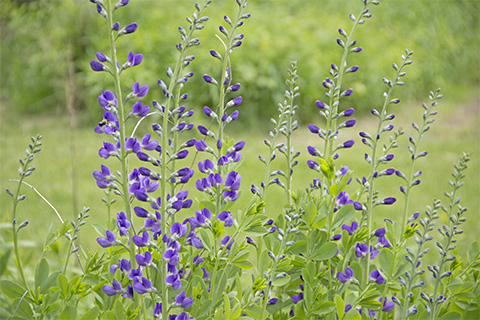 "
"
Blue false indigo
Blue false indigo (Baptisia australis) and true indigo (Indigofera tinctoria) are two species in the Fabaceae (pea) family that are native to different continents. Blue false indigo -- which is not common in Pennsylvania -- can be found on riverbank scour areas and gravel bars.
True indigo is native to Asia, and is widely cultivated and used for indigo dye for over 4,000 years. Crushed leaves of blue false indigo will also produce a blue solution like true indigo.
It's April Fool's Day, so beware the fools and jokes that people play, and remember -- nature has her own way of fooling too!